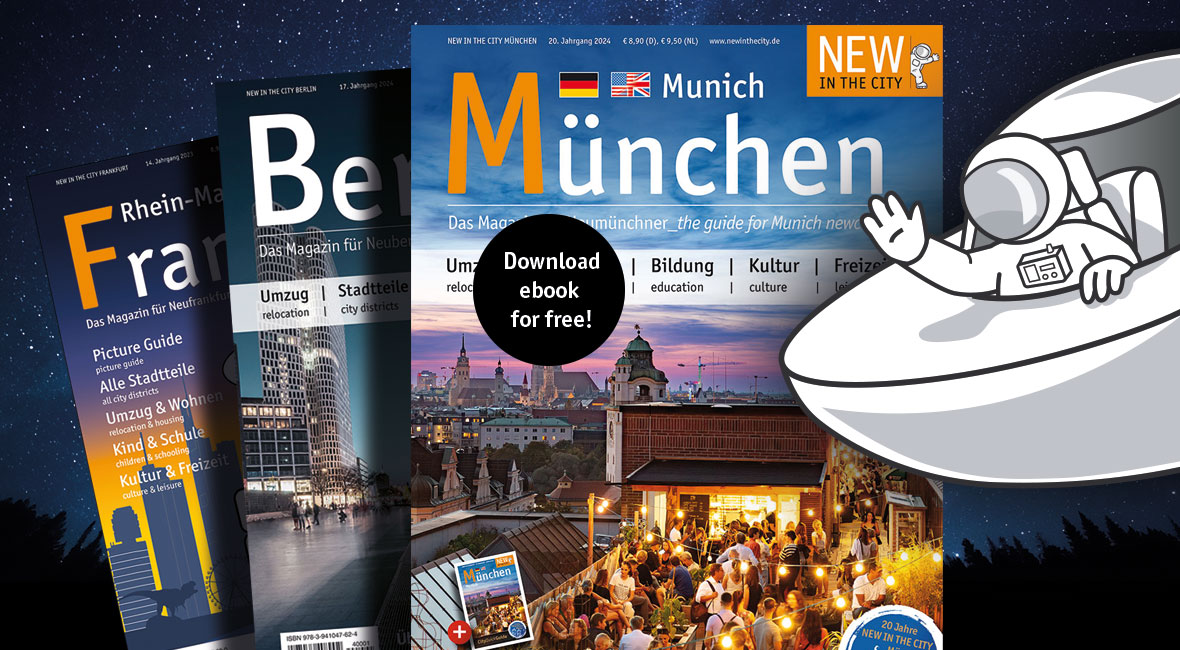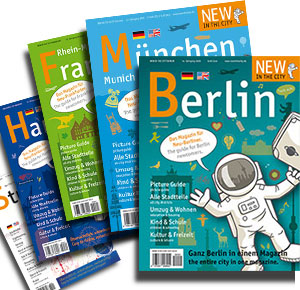From Sept. 22 - Oct. 7, 2012
How do you get about 7 million people to drink 7.5 million liters of beer in 16 days? In Munich, it's not a problem. You just lock them up in huge tents with the right brass and party music and wait to see what happens! Only time will tell whether the 179th Wiesn, as Munich natives affectionately call it, will top the visitor record of 1985 or the beer consumption record of 2011.
In addition to visitors from all parts of Germany, party animals from around the world arrive here, to experience this lunacy "live" at least once in a lifetime. Italians, Americans, Japanese and Australians especially love the festival. And the residents of Munich naturally do as well.
It all starts off with the traditional Oktoberfest tapping of the first cask of beer at noon in the Schottenhamel festival tent. To be precise, at the moment when Mayor Christian Ude drives the tapper into the cask with a couple of blows and then shouts the famous words "O'zapft is!" into the crowd.
From then on, a state of emergency reigns on the Theresienwiese, and about 500,000 roasted chickens, 118 full-grown oxen, 60 calves, 120,000 pork sausage pairs and 50,000 pork knuckles are about to be consumed, in addition to the 7.5 million liters of beer.
"Oide Wiesn" gives way to Munich's Central Agricultural Festival in 2012
The bad news first: This year, there won't be an "Oide Wiesn" (Old Wiesn), introduced in 2010 for the 200th anniversary of Munich's Oktoberfest and about as popular with visitors from Germany and abroad.
In exchange, the quadrennial Munich's Central Agricultural Festival is opening its gates in the same spot and will run from Sept. 22 to 30 south of the Oktoberfest site.
Here visitors learn all about current trends regarding nature, the environment and agriculture. The animal exhibition is especially popular with children, and there is naturally no shortage of great food.
And the good news is ...the "Oide Wiesn" is coming back next year! And with an additional museum tent, it will be bigger and better than ever. Then all the old- time Munich natives and nostalgia buffs can escape the mega hustle and bustle of today and relive the way Oktoberfest was celebrated 200 years ago when people still drank their beer from steins and marveled at folk dances and other traditional performances.
How it all began
At the same time, Oktoberfest started out small. On Oct. 17, 1810, Major Andreas Michael Dall'Armi, a banker, organized a horse race on the meadow in front of Munich's city gates on the occasion of the marriage of Ludwig of Bavaria and Princess Therese von Sachsen-Hildburghausen.
The site was given the name Theresienwiese in honor of the bride and Oktoberfest was born.
Over time, Oktoberfest continued to attract more visitors, and growing numbers of showmen, booths and carousel operations gave the "Wiesn" the character of a true folk festival. In 1850, the statue of "Bavaria" was unveiled, which naturally offered abundant reason to celebrate. In 1881, another beginning would be marked: chicken roasters opened a stand for the first time, to the dismay of our feathered friends and to visitors' great pleasure.
Growth
At the end of the 19th century, modernity made its way onto the Wiesn. Electric light illuminated booths and carousels, and the small beer booths made way for large beer tents.
Oktoberfest fell by the wayside during the two world wars as well as the economic crisis of the 1920s. But then Mayor Tobias Wimmer officially opened the second postwar Wiesn in 1950
The folk festival experienced its darkest hour on September 26, 1980 when a bomb exploded at the main entrance.
The so-called Wiesn attack took the lives of 13 people, including the extreme right-wing perpetrator Gundolf Köhler himself. More than 200 visitors were injured, in some cases seriously.
A memorial at the main entrance recalls the victims of this senseless and inhuman act.
Despite this tragic incident, Oktoberfest has developed into the world's largest and most popular festival, with people of every nationality celebrating peacefully and exuberantly with one another.
Cuisine
Once again, there will naturally be a rich variety of treats to sample at this year's Wiesn. Visitors take pleasure in the wide array of Bavarian standards such as roast chicken, pork knuckles, savory cheese spread, roast pork and many more.
But if you were to believe that the Wiesn had only wide-ranging varieties of meat to offer, you would be wrong.
Many small and medium-size food operations provide a welcome relief. For example, cheese gourmands are sure to get their money's worth at Fesinger's cheese and wine tavern. Anyone with a sweet tooth is in the best possible hands at the Café Kaiserschmarrn. The land of milk and honey would be the only other source of these extremely fine pastries and the enormous selection of cakes and treats made of sugar icing and chocolate.
Showmen
The many large and small carnies, with their booths, roller-coasters and bumper cars, are naturally part of the world's largest festival.
Anyone climbing into a roller-coaster after three beers is demonstrating true greatness. The humorous- macabre Schichtl Variety Show and contrivances like the Devil's Wheel are a must for every visitor. To be named the proud winner, daring souls withstand institutions like the Devil's Wheel for as long as they can amid the moderator's teasing and the audience's jeers.
Costume and Rifleman's Parade
Visitors should under no circumstances miss the entrance of the Oktoberfest the beer tent hosts and showmen onto the Oktoberfest fairgrounds. .
The Münchner Kindl, a young woman representing Munich, waves to the crowds from the lead wagon, followed by other splendidly decorated coaches and vehicles. Visitors can begin marveling at the parade at 10:45 a.m on Sept. 22.
In similar fashion, the following Sunday is especially recommended to fans of traditional costume parades:
Starting at 9:45 a.m. wearers of traditional costumes from Bavaria, the rest of Germany, and abroad move through the city-center to the strains of their home regions and countries.
This colorful spectacle should not be missed.
Beer tents
In 14 large beer tents , people accompanied by an excellent live band dance on tables, sing and – most of all – drink.The Schottenhamel tent, where the mayor taps the first beer cask at precisely noon on the first day of Octoberfest, is especially popular among the young. So is the Hacker Pschorr tent, where the flirtation reaches a fever pitch.
›› All 14 Wies’n tents at a glance
Important dates, links & info
›› Arrival route: U4/U5-Theresienwiese, U3/U6 Goetheplatz, S1-S8 Hackerbrücke
›› Beer tent hours: weekdays 10 a.m.-11:30 p.m., on the weekend & on holidays at 9 a.m., Käfer's Wiesnschänke & the wine tent until 1 a.m.
›› beer tents counter: weekdays 10 a.m.- 10:30 p.m., on the weekend & on holidays 9 a.m.-10:30 p.m.
›› Hours carnival rides: 10 a.m.- 11:30 p.m., Fri & Sat until midnight, Sun 9 a.m. - 11:30 p.m.
›› Entrance of the Festival Hosts: on the first day of the festival 10:45 a.m. - noon
›› Family days: discount prices each Tue from noon - 6 p.m.
›› Midday Wiesn: discount prices 10 a.m. - 3 p.m.
›› www.oktoberfest.de
›› The most beautiful Munich costume shops
›› To the Munich Beer and Oktoberfest Museum
{gallery}photogallery/muc/Oktoberfest2{/gallery}






